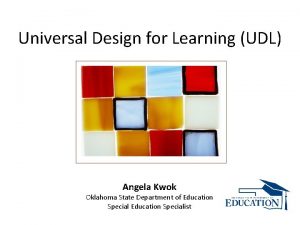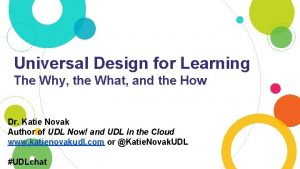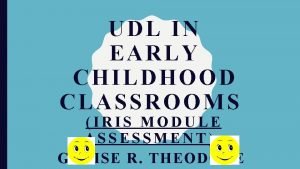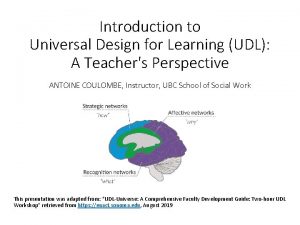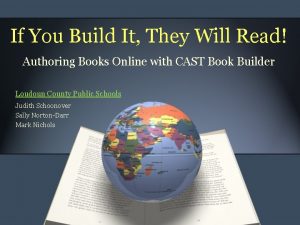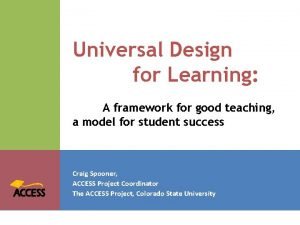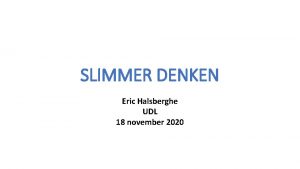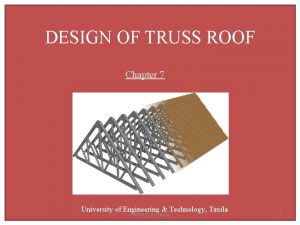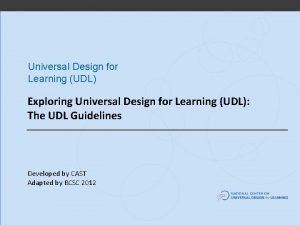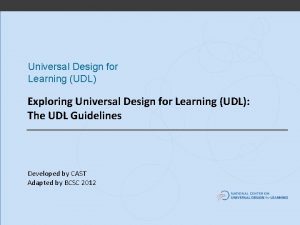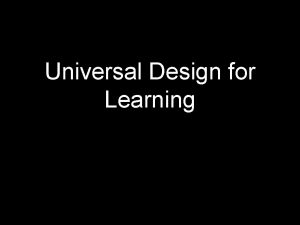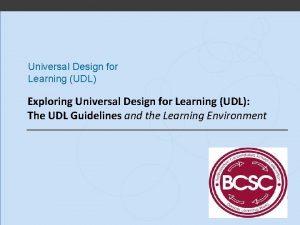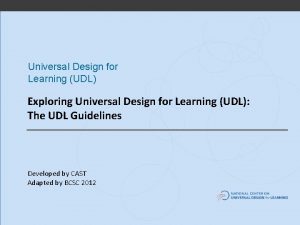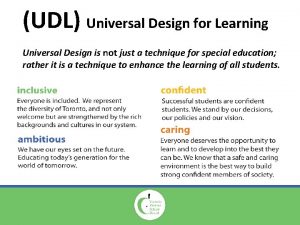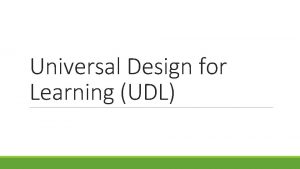UDL Universal Design for Learning Universal Design is








- Slides: 8

(UDL) Universal Design for Learning Universal Design is not just a technique for special education; rather it is a technique to enhance the learning of all students.

The BIG Idea UDL is flexible, supportive, and adjustable, and increases full access to the curriculum for all students. UDL sees all learning as a continuum. Every student is unique and will therefore benefit from a flexible curriculum that provides him or her with the appropriate pathways for reaching learning goals, as well as fair and accurate assessment.

UDL/DI Framework Responds to students strengths & needs. “In a diverse classroom, no single method can reach all learners. Multiple pathways to achieving goals are needed. ”

UDL Principles Universality & Equity Using 21 st Century Technology in the classroom allows students to have equitable access to programming and resources to support their own learning - expression of learning. Flexibility & Inclusion Including student voice as a focal point in every classroom environment (incorporated in a purposeful way) will seek out the strengths and attributes of all students. Appropriately Designed Space Creating a safe, inclusive and accepting learning environment which promotes fairness, equity, and respect for all will create a sense of belonging and connectedness. Safe Environment: “Belonging” Developing (co-constructing), creating and implementing a student-driven learning profile allows for a greater sense of belonging in the classroom. Simplicity: Learning Goals & Success Criteria Engages students in their understanding of the “big idea” and subsequently their connection to their own learning profile and learning goals.

g n E t den s Stu e s a e r c In nt e m age ty i n u m m uilds Co Supports 2 B 1 st Century Le Allows the student to demo arning Mee Why these principles are important… ts Di vers e Le arnin g Ne eds nstrate capabilities Develops S e c i o elf-Advocac V t n e d u y t S s e r u Ens Supports the achie vement and well-b eing of all Promotes A s t n e d u t s Positive Sch e r e h w t n e m ool Climate Environ s k s i r e tak o t Emphasize e e r f l e e f s ability to y rld t o i l w i l a b e i r ’ s s es ent d c u c t s s A e e h i s t t to ni ve d e u o t t c r e r p n o C Im pp O g n i Learn Supports transitions into new learning environments

UDL: Belonging and Inclusion The greatest stratification in students’ experiences of belonging and exclusion exists across learning environments. Building a positive school climate means embedding the principles of equity and inclusive education in all aspects of the learning environment. If the school environment, inside and outside the building, is welcoming and makes the school a safe, inclusive and accepting place …it will be conducive to learning for all.

Investment in Teaching Excellence Session A 1

